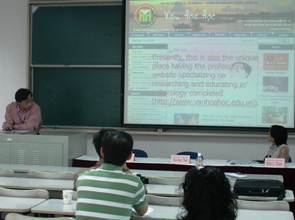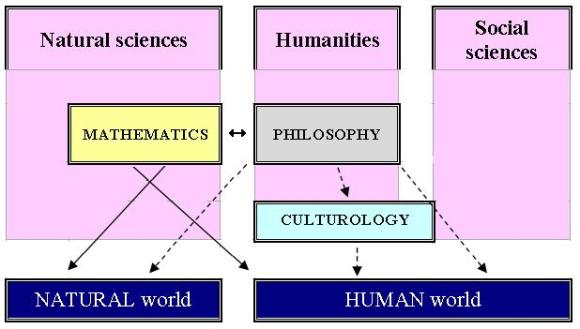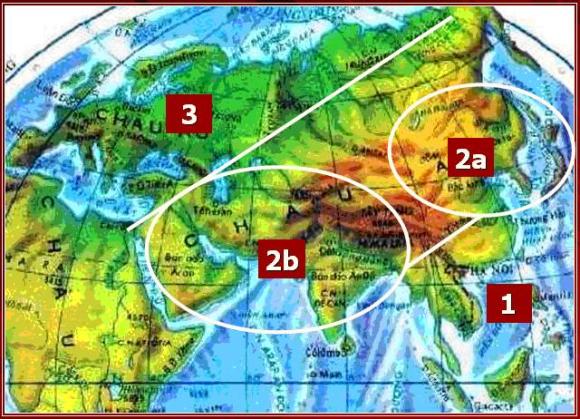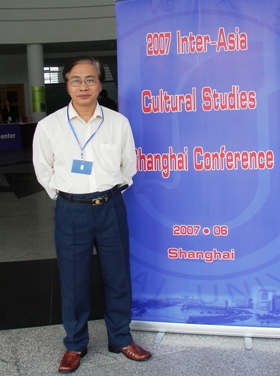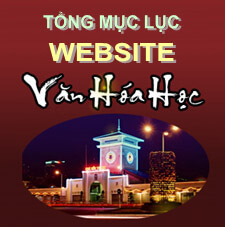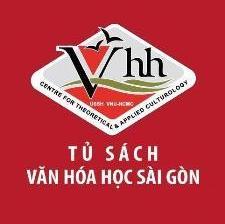I- Some features on cultural studies units
In Vietnam, Ho Chi Minh City stands for the top position in term of urban area, urban population and economic power, and in the second position in regarding to cultural, scientific and educational activities and achievements (right after Hanoi - the capital).
Particularly, in researching and educating culturology, there are five units (organizations) involved. They are (1) Department of Culturology (University of Social Sciences and Humanities (USSH), Vietnam National University - Ho Chi Minh City (VNU-HCMC)), (2) Centre for cultural studies (National Southern Institute of Social Sciences), (3) Section for cultural studies (Institute of Social Sciences of Ho Chi Minh City), (4) University of Culture of Ho Chi Minh City 文化大学, and (5) Department of Cultural Studies (Van Hien University文献大学).
Among these units, the Department of Culturology in USSH (a member of VNU-HCMC) is remarked as the strongest organization for its stronger force of scientists (experts) and longer experience in researching and educating in culturology. The studies of culturology in USSH has been started long time ago, its forerunner is Van Khoa University of Saigon (Saigon University of Literature 文科大学). During the period of 1960 - 1975 - the period of Southern revolution, there were many famous professors in culture studies joined Van Khoa University of Saigon such as Luong Kim Dinh, Le Van Sieu etc.. The decade of 1990 witnessed the formation of the subject "Basis of Vietnamese culture" and its textbook. After that, this subject has brought to nationwide training programme of all universities. The monograph "Discovering Vietnamese cultural identities" by Prof. Tran Ngoc Them has caused many useful discussions and achieved a good fame both in Vietnam and abroad, and until now it is considered as the best-seller of cultural books and materials. From 2000, USSH carried out the masteral training courses in culturology. At present, USSH is famous for its complete training system in culturology with all training levels: undegraduate, post-graduate (masteral and doctoral levels). There are many basic researching works in culturology are carrying out here in USSH. Presently, this is also the unique place having the professional website specializing on researching and educating in culturology completed (http://www.vanhoahoc.edu.vn ).
The Centre for cultural studies (National Southern Institute of Social Sciences) and Section for cultural studies (Institute of Social Sciences of Ho Chi Minh City) are newly established organizations. They are constructing and implementing many practical researching fields such as the applied culture studies and modern culture studies (urban culture, suburban culture, youth culture, popular culture, audovisual culture etc..).
University of Culture of Ho Chi Minh City, and Department of Cultural Studies in Van Hien University mainly mafor in educating undergraduate level in culture studies; therefore, their scientific achievements in culturology are still limited.
This paper is not to review all culturological researching backgrounds in Ho Chi Minh City but is to concentrate in pointing out the achievements of the researching group at VNU-HCMC for the sake of sketching some important features of one of main schools in culturology presently forming in Vietnam.
II- The approaching way of researching culturological theories
The researching of culturological theories in Ho Chi Minh City is mainly doned in the Department of Culturology in USSH (VNU-HCMC). As one can see in all published textbooks and materials, in teaching materials in all levels (undergraduate, post-graduate) and in other scientific researches that we have done, we - the culturologists - advocate the researching approach: culturology is an independent science (its technical term: "van hoa hoc" / culturology / культурология / 文化学). This science has its own object of study, poisition and researching methods etc... This concept is supported by Russian and Chinese scholars rather than scholars from European or American nations (mainly base on the term "culture studies", likely unifying culture studies and cultural anthropology). In Vietnam situation, many educational and researching units in this field are of this European-American way.
In brief, in our opion, culture is identitied through four typical characteristics: systematicality (systematic completion), value-base, humanness and historical spreading. One can easily distinguish culture with the other four notions: value set, non-culture, nature and civilization (picture 1).
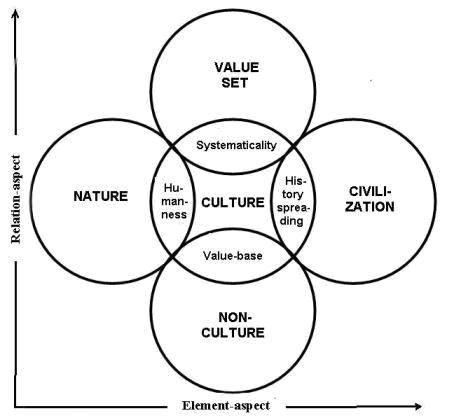
Picture 1: Identifying culture
Culturology is identified as a human science bordering to social sciences, the science with its object of study is "culture" with the capacity of a system of symbolic values, the science with the researching approach based on multi-disciplinary qualitative theories, large-scale researching sphere and high genaralization capacity (picture 2).
Picture 2: The position of culturology
(solid arrow - quantitative relations; interrupted arrow - qualitative relations)
On the position of culturology, as we got to know, the popular concept in China ranks culturology at the second position: below philosophy and above all the other social sciences and humanities [Nguyen Ngoc Tho 2006].
Our concept is quite near to Chinese scholars', however, it is not totally homogeneous in detail. The difference can be found at the point: we don't put these relations in the well-arranged ranking of the sciences. The differences between philosophy, mathematics, culturology and the other sciences are only the result of the scientific works' assignment (or sharing). Each science has its own strong and weak points. The sciences of philosophy, mathematics and culturology may cover larger sphere in handling relating facts (or events); therefore, they need to have higher generalization capacity than any other sciences. In return, they are far to be the same as the other sciences in term of specilization capacity and particularization level. If one science covers larger sphere of study, it cannot go deeper in specilization, and if it is deeply specilized, it is unable to cover larger sphere of study. Therefore, all sciences are equal.
Unlikely the cultural anthropology which applies the experimental researching method and focuses on participation observation and fieldwork survey, we consider culturology as a theoretical science for it mainly works with materials brought from the other social sciences and humanities. The practical observation and fieldwork survey can offer supplementary but uncompulsory materials. Among theoretical methods applied in sciences, we priorly focus on the systematic - typological method.
III- The approaching way of researching world cultures
By using the systematic and typological method, we define the starting point of research by distinguishing between Oriental and Occidental cultural traditions. From that perspective, we come to distinguish the difference between the cultural types of two areas: agricultural-originated cultural type and nomadic-originated cultural type. And from the angle of generalization capacity, we classify into mobility-dominated cultural type and tranquillity-dominated cultural type.
Hình 3: Worldwide cultural regions
Between these two typical types, there exists the intermediate type which contains attributes of all two typical types mentioned above. In particular analysis in the case of Euro-asia continent - the cradle of mankind culture, the typical tranquillity-dominated (重静) is the cultural type of the whole ancient Southeast Asian region while the typical mobility-dominated (重动) is of European region. All the regions from Southwest Asia, India to Siberia and Northeast Asia are of the intermediate cultural type. This large strip of land can be divided into two smaller sub-regions: secularity-esteeming intermediate cultural type in Northeastern sub-region (2a); and spirit-esteeming intermediate cultural type in Southwestern sub-region (2b). The complete picture of cultural types and cultural region classifications in the Euro-asia continent can be described in picture 3 and in chart 1:
Chart 1: Cultural types and cultural regions
|
Attribute |
CULTURAL TYPE |
CULTURAL REGION |
||
|
YIN阴 |
1- tranquillity-dominated |
1. Southeastern region |
||
|
YIN-YANG HARMONY 阴阳融合 |
2- inter-mediate |
2a- spirit-esteeming |
2. transitional region |
2a. Southwestern sub-region |
|
2b- secularity-esteeming |
2b. Northeastern sub-region |
|||
|
YANG阳 |
3- mobility-dominated |
3. Northwestern region (Occident) |
||
Upon these contrary pairs, we can define a list of characteristics of each cultural type. From that basis, a series of cultural events or phenomena in different regions (areas) can be identified clearly.
For instance, the causes of the miraculous development in Northeast Asia are said not to be Confucianism, family doctrine, or "Asian values" etc. In fact, this is the transitional region with the secularity-esteeming intermediate cultural type: it contains the characteristics of both tranquillity-dominated type such as stability (= solidity), love-dominated (重情) attribute (= "humanity-ruled doctrine"仁治), flexibility (= easy adaptation) etc. and mobility-dominated type such as mobility (= development), legality-dominated (重理) sense (= "law-ruled doctrine"), principle-based sense (= orderly and strict discipline) etc.. In addition, the secularity-dominated sense of culture helps bring this region into the pragmatic life. By unifying these thre cultural flows, one can easily recognize that Northeast Asia is the unique region in the world to own the harmonious combination of the tranquility and the mobility, the Orient and the Occident, the stability and the development, etc.. The specific values such as Confucianism, family doctrine or "Asian values" etc.. are the consequences of the aboved-mentioned characteristic.
The following are important projects (themes) that we are presently concentrating on: (1) Korean culture from Vietnamese perspective, (2) Chinese culture from Vietnamese perspective, (3) Baiyueh culture and its relations to Vietnamese traditional culture, (4) Indian culture and its influences, (5) Southeast Asian culture and its influences.
IV- The approaching way of researching Vietnamese culture
Basing on the systematic and typological method, we advocate to study Vietnamese culture as a typical representative of the tranquillity-dominated cultural type. It undoubtedly presents fully the relevant cultural characteristics such as nature-respecting tradition; rich generalization-based thinking (概括思维) way but poor analytical mind; love-respecting but law/reasoning-declining senses (重情轻理); women-respecting tradition during almost the long-lasting history although much impact of the Confucius men-respecting tradition was early imported (from China); literature-respecting rather than strength (power)-respecting trend (重文轻武) although Vietnam had to endure several harsh wars during history; rural democracy-inclining although much influences from the orderly Confucius tradition can be found; easy-harmonized flexibility which causes the random/casual mind etc...
Seeing from outside perspective, one can recognize that Vietnamese culture belongs to the tranquillity-dominated tradition compared to Northeast Asian culture - the typical representative of secularity-esteeming intemediate cultural type of the world (2a), to Southwest Asian culture - the typical representative of spirit-esteeming intermediate cultural type of the world (2b); and to Occidental culture - the mobility-dominated cultural type of the world (3).
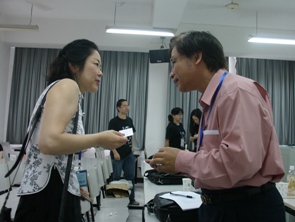
Seeing from inside perspective, nationwide cultural areas can be also identified by the same method. For instance, among three cultural areas of Vietnamese residents (Kinh ethnic group京族人), the Northern Plain is of the most tranquil (yin阴性) characteristic, the Central Land is of more active property, and the South is of the most active property (yang阳性). In the South itself, the Southeastern part is more active than the Southwestern one.
Upon the framework of studying Vietnamese culture, the researching group of VNU-HCMC as well as the other four groups (see part 1) priorly focuses on the researchings of Southern Vietnamese culture. In regarding to cultural space, the Southern Vietnam consists of three sub-areas: Central Coastal Land, Western Land and Southern Plain. In regarding to cultural history, The Southern Vietnam covers three remarkable ancient cultures: Sa Huynh culture (in Central Coastal Land), Dongnai (in Eastern South东南部) and Oc Eo culture (in Western South西南部). In regarding to cultural subjects, beside Vietnamese culture (京族), the Southern Vietnam is also the converging land of three other ethnic cultures: the Cham culture (占族), Khmer culture (高棉族) and Chinese-rooted Vietnamese (the Hoa 华族) culture.
In mondern Southern Vietnam, there still exists a strong social and ecomonic division: Eastern South area, once the poor place, has become a developed urban area with the highest GDP income nationwide, while the Western South (Mekong Delta), once the most fertile and richest place in the past, is now facing the difficult background of being backward in education and becoming poorer economically compared to the other areas nationwide.
The researchings on culturology of the USSH specialists concentrate on the following three directions: (1) urban culture in Ho Chi Minh City and Eastern South area (management culture, transportation culture, youth culture, audovisual culture, business culture etc.), (2) suburban culture in Ho Chi Minh City and Eastern South area (the urbanization processes, cultural conversion, religious culture, family culture etc.); (3) Western South (Mekong Delta) culture (educational culture, religious culture, urbanization processes etc.).
***
In general, the cultural researchings in Ho Chi Minh City are just at the first stage, several important scientific projects are still uncompleted or published.
SOME SCIENTIFIC WORKS OF VNU-HCMC CULTUROLOGICAL GROUP
1. http://www.vanhoahoc.edu.vn
2. Đinh Thị Dung 2008: Mối quan hệ giữa sử học và văn hóa học. - http://www.vanhoahoc.edu.vn/site/index.php?option=com_mycontent&;task=view&id=233&Itemid=57
3. Nguyen Ngoc Tho 2006: Culturological theories in China. - http://www.vanhoahoc.edu.vn/site/index.php?option=com_content&;task=view&id=24&Itemid=62
4. Nguyễn Văn Hiệu 2006: Văn hóa đạo đức truyền thống (từ bối cảnh văn hóa Nam Bộ nửa sau thế kỷ XIX). – In trong: “Đồng bằng Sông Cứu Long: Thực trạng & Giải pháp để trở thành vùng trọng điểm phát triển kinh tế giai đoạn 2006-2010”, Nxb. ĐH Quốc gia Tp.HCM, 2006. http://www.vanhoahoc.edu.vn/site/index.php?option=com_mycontent&;task=view&id=512&Itemid=57
5. Phan Thu Hien 2006: Indian cultural foundation in Southeast Asian cultural identities. - http://www.vanhoahoc.edu.vn/site/index.php?option=com_content&;task=view&id=113&Itemid=85
6. Trần Ngọc Khánh 2008: Bàn về sự tương tác giữa môi trường tự nhiên và môi trường văn hóa trong quá trình đô thị hóa. - http://www.vanhoahoc.edu.vn/site/index.php?option=com_content&;task=view&id=534&Itemid=96
7. Tran Ngoc Them 1995: Basic Vietnamese culture, University of Ho Chi Minh City Publishing House, 1st – 2nd – 3rd printed in 1995 (500 pgs.), 1996 (380 pgs.), 1997 (280 pgs.); Education Publishing House, 1st - 2nd – 3rd printed in 1997, 1998, 1999 (340 pgs.) [Vietnamese].
8. Tran Ngoc Them 1996: Discovering the identity of Vietnamese culture. Ho Chi Minh City Publishing House, 1st – 2nd – 3rd – 4rd– 5rd printed in 1996, 1997, 2001, 2004, 2006 (680 pgs.) [Vietnamese]. French translation: Recherche sur l’identite de la culture vietnamienne. – Edition The Gioi, 2001, 2006. - 852 pgs.
9. Tran Ngoc Them 1997: Some methodological issues in the process of discovering Vietnamese identities. - Philosophy Magazine, No. 3+4-1997, pgs. 155-162 [Vietnamese].
10. Tran Ngoc Them 1999: The issue of Vietnamese national identities. - Social Sciences Magazine, No. 42, 1999, pgs. 24-32 [Vietnamese].
11. Tran Ngoc Them 2000: The outline of culture. – In Book: Sketching out the portrait of Vietnamese culture, Hanoi, National Politic Publishing House, 2000, pgs. 17-36 [Vietnamese].
12. Tran Ngoc Them 2004: Korean studies in Vietnam. – In: “International review of Korean Studies”, vol. 1, number 1, January-December 2004, p. 161-176 [English].
13. Tran Ngoc Them 2004: The role of national nature in the Korean development (in the comparition with situation in Vietnam). – In: “Human Studies”, No. 6 (15), 2004, pp. 53-60 [Vietnamese].
14. Tran Ngoc Them 2005: China from the geo-culural point of view. - In: China and the Chinese writing cultural area. - USSH, Ho Chi Minh City, 2005, pgs. 24-32 [Vietnamese].
15. Trần Ngọc Thêm 2008: Tính cách văn hóa người Việt Nam Bộ như một hệ thống. - http://www.vanhoahoc.edu.vn/site/index.php?option=com_mycontent&;task=view&id=408&Itemid=57



